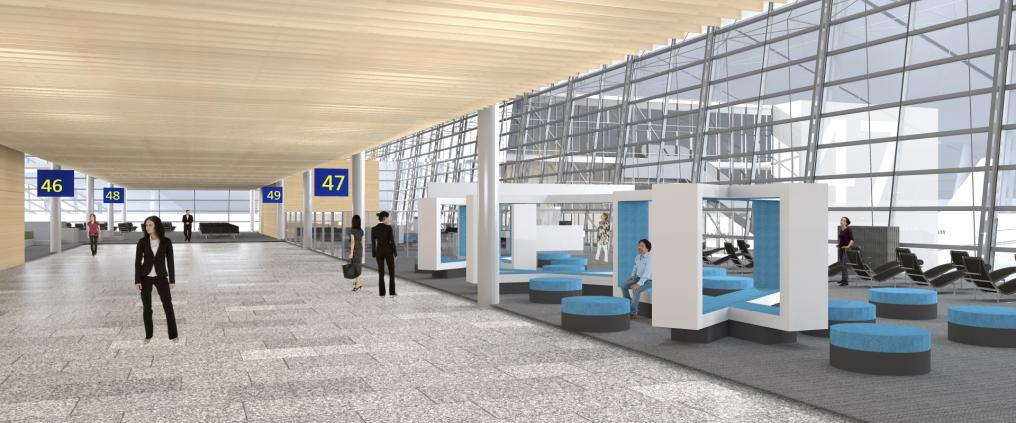Using video game technology has helped Helsinki Airport to gather feedback and comments from the airport’s stakeholders and confirm that everybody understands new designs in the same way.
“Gaming technology helps to visualise technical designs and enable everyone, even those without any knowledge of construction, to understand them. The designs of the Helsinki Airport expansion project are already in 3-D. This makes them quite simple to convert to the game engine, Unity, which shows graphics very well compared to other design software,” says Verneri Lehtovirta, Project Manager at Sweco PM, an engineering consultancy company who has been partnered with Finavia in Helsinki Airport Development Programme.
Lehtovirta adds that this virtual model facilitates decision-making, leads to a common understanding and makes it possible to gather comments and hold an open discussion. It also helps a lot in managing ORAT (Operational Readiness and Airport Transfer), i.e. making sure the new extension is ready for operational use and transferring services to the new terminal extension. In addition, facility maintenance can be considered very early on in the design phase.
Developing a smooth passenger experience
The design of the most extensive expansion project in the history of Helsinki Airport focuses on developing the customer experience. To achieve this, gaming technology was utilised as early as 2015, when the architect’s 3-D models were first made available.
“This was some three years before the opening of the terminal extension. We generated a process called virtual safari, where we walked through typical passenger paths with the stakeholders,” he continues.
Lehtovirta says that the biggest benefit is that all passenger paths – for arriving, departing and transfer passengers – can be made as smooth as possible and that these meet expectations. Safety matters have been taken into account very accurately. For example, all cameras have been verified using this virtual model.
"We can look at the airport's critical operations and important passenger trails from many different perspectives and discuss the right issues," concludes Lehtovirta.
Image: PES-arkkitehdit Oy, illustration of the West Pier
Read more about the Helsinki Airport Development Programme
Read about how runways are used at Helsinki Airport



